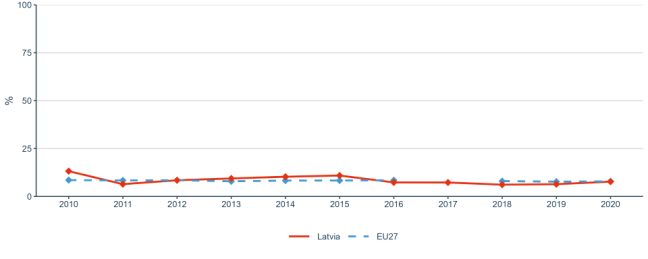ERA Country Report 2023
Latvia
Edited by Elina Griniece (EFIS Centre)
as part of ‘Development of the ERA Scoreboard, the ERA Dashboard and the Regular Reports’ project for the European Commission, Directorate-General for Research and Innovation under Framework Contract N° 2018/RTD/A2/OP/PP-07001-2018 Lot 2 (EDAR)
Click here to download this country report![]()
- Table of contents
-
ERA Country Report 2023: Latvia
1. National context
1.1. Overview of the ERA policy agenda implementation
1.2. Policy context
2. Assessment of the Implementation of the ERA Policy Agenda and ERA Priorities
2.1. ERA Priority 1: Deepening a truly functional internal market for knowledge
2.2. ERA Priority 2: Taking up together the challenges posed by the twin green and digital transition and increasing society’s participation in the ERA
2.3. ERA Priority 3: Amplifying access to research and innovation excellence across the Union
2.4. ERA Priority 4: Advancing concerted research and innovation investments and reforms
3. Country-specific drivers and barriers
4. Final remarks
5. Bibliography
6. Annexes
6.1. Annex 1: Graphs
ERA Country Report 2023: Latvia
|
Key takeaways:
|
1. National context
1.1. Overview of the ERA policy agenda implementation
According to the European Innovation Scoreboard 2023, Latvia is an Emerging Innovator with a performance at 52.5% of the EU average. Latvia’s innovation performance is increasing at a lower rate than that of the EU, hence the country’s performance gap in line with the EU is becoming larger. The country’s research and innovation (R&I) system is characterised by a very low R&I intensity.
To strengthen the R&I system and the integration of Latvian research performing organisations in the European R&I landscape, Latvia has committed to eight out of the 17 European Research Area (ERA) Actions. These include commitments towards promoting open science, reform of research assessment, attractive and sustainable research careers and sustainability and accessibility of research infrastructures within ERA Priority 1: Deepening a truly functioning internal market for knowledge (Actions 1, 3, 4 and 8). Latvia also has committed to contribute to the EU R&I missions and partnerships and accelerate the green/digital transition of Europe’s key industrial ecosystems within ERA Priority 2: Taking up together the challenges posed by the twin green and digital transition and increasing society’s participation in the ERA (Actions 10 and 12), as well as to improve access to excellence and enhance capacity of public research performing organisations within ERA Priority 3: Enhancing access to research and innovation excellence and enhancing interconnections between innovation ecosystems across the EU (Actions 16 and 17).
1.2. Policy context
Research and innovation policy in Latvia is predominantly developed, funded and implemented at the national level. The main policy-making function is divided between the Ministry of Education and Science (MoES) and the Ministry of Economics (MoE). At implementation level, the main institutions are the Latvian Council of Science, that coordinates the implementation of research policy, and the Investment and Development Agency of Latvia (LIAA), that implements support programmes for entrepreneurship and innovation. Since 2021, the main responsibility of the Smart Specialisation Strategy (RIS3) implementation has been transferred from the MoES to the MoE ^ In 2022, a new Council for Innovation and Research Governance (IPPP) was established bringing together the ministers and directors of these four key organisations to ensure more streamlined R&I governance and monitoring of RIS3 implementation. ^
In terms of R&I policy, the National Development Plan 2021-2027 (NDP2027) is the highest medium-term planning document that also includes overarching national level targets for improving Latvian scientific excellence for the development of society, the economy and security. On a more operational level, the Guidelines for Science, Technology Development and Innovation 2021-2027 outline the medium-term objectives of research and innovation policy and the National Industrial Guidelines 2021-2027, that cover also RIS3, address the angle of industrial and innovation policy angle.
The main recent policy developments that contribute to ERA priorities mostly relate to the adoption of the Latvian Recovery and Resilience Facility Plan (RRP). In the period 2022-2025, the Latvian RRP includes an investment of almost EUR 200 million in support to research and innovation that over six years will add around 0.1% of GDP to Latvia’s annual R&I spending. ^ This is considered an important boost to the R&I system and will support various reforms in the higher education sector such as aligning university courses with industrial needs and improving the attractiveness of research careers, and a top up investment in economic transition towards higher added value production. In a similar vein, the European Union (EU) Cohesion Policy ^ allocates another EUR 342 million to R&I for the period 2021-2027 ^ for a range of research and innovation support measures with a particular emphasis on the green and digital transition and supporting EU-wide access to excellence. ^
2. Assessment of the Implementation of the ERA Policy Agenda and ERA Priorities
This section evaluates the achievements related to the ERA Priorities and the ERA Actions that Latvia is committed to. This information has been collected from the OECD STIP Survey as well as from additional desk research. In addition, it provides quantitative data to reflect the country’s performance in regard to the ERA sub-priorities, gathered from the ERA Scoreboard and ERA Dashboard.
The quantitative information presents the most recent data available for the ERA Scoreboard and ERA Dashboard indicators. However, in some cases, the data available pre-dates the ERA Policy Agenda. Therefore, the longer-term trends covering the last ten years are presented. The indicators falling under each ERA priority are presented below, and the general indicators are outlined in Table 1. More detailed information on the data and graphs can be found in Annex 1. This report will serve as a baseline for reporting in the future.
|
Indicator |
Most recent EU average |
Most Recent Metric |
|
Gross Domestic Expenditure on R&D (GERD) as a percentage of GDP |
2.26 (2021) |
0.69 (2021) |
|
Government Budget Allocations for R&D (GBARD) as a share of GDP |
0.76 (2021) |
0.25 (2021) |
|
Researchers (in full-time equivalent) per million inhabitants |
4,483.4 (2021) |
2,390.6 (2021) |
|
Business Enterprise expenditure on R&D (BERD) as a percentage of GDP |
1.49 (2021) |
0.2 (2021) |
Source: compiled by research team based on the ERA Scoreboard and ERA Dashboard indicators
2.1. ERA Priority 1: Deepening a truly functional internal market for knowledge
2.1.1. State of play in the implementation of the ERA Actions
There are important recent policy developments in Latvia with respect to ERA Action 1: Enable the open sharing of knowledge and the re-use of research outputs, including through the development of the European Open Science Cloud (EOSC). In late 2019, the MoES initiated open science landscape research with the aim to create a roadmap for national open science policy. ^ This landscape mapping exercise served as a basis for the adoption of Latvian Open Science Strategy 2021-2027. The strategy explicitly mentions the European Open Science Cloud (EOSC), sets out actions to ensure open access to research results and research data for a wide range of stakeholder groups, addresses FAIRisation of data, as well as promotes citizen science. Latvia has also set up a Shared IT Service Centre for Higher Education and Research Information (VPC) and supported the creation of a network of general research data repositories, such as the DataverseLV implemented by VPC. Over the years, open access conditions and facilitating measures have gradually been introduced into research programmes (e.g. State Research Programmes), various policy planning documents, strategic documents of research institutions, etc. Latvia is planning to appoint a Mandated Organisation to the EOSC Association. ^
Towards ERA Action 3: Advance towards the reform the Assessment System for research, researchers and institutions to improve their quality, performance and impact, Latvia has performed two international research assessment exercises (RAE) in the last decade. The first international evaluation of Latvian research institutions took place in 2013. ^ Its results paved the way for the initiation of consolidation activities concentrating research resources in internationally competitive research institutes and research universities. ^ The second RAE was implemented in 2019 ^ supporting the completion of research system reform that aimed to consolidate the pre-existing fragmented research landscape into 20 internationally competitive research centres. The assessment of each research institution is made every six years and against five criteria: ^ research excellence, impact on research field, socio-economic impact, research environment and infrastructures and development potential. ^ As part of the EU Enhanced Dialogue with Latvia that started in 2023, the MoES has expressed readiness to sign the Agreement of the Coalition for Advancing Research Assessment (CoARA). ^
In terms of contributing towards ERA Action 4: Promote attractive and sustainable research careers, balanced talent circulation and interdisciplinary and inter-sectoral mobility across the ERA, the main emphasis in Latvia is currently placed on the development of a new academic career model to increase the attractiveness and sustainability of research careers. This has been recognised as one of the key national priorities in the research and education sector. To prepare and support these reforms, the Latvian MoES has taken advantage of multiple advisory services, including the European Commission (EC) Policy Support Facility (PSF). The PSF exercise provided external advice and recommendations on reforms and actions to address the development of Latvia’s human capital in R&I, focusing on policies for attracting and retaining R&I talent, increasing attractiveness and improving the structure of research careers, as well as inter-sectoral mobility. ^ To implement this, the Latvian government turned to the EC Directorate-General for Structural Reform Support and the World Bank, which led to the initiation of a joint project ‘Latvia: Academic Career Model’. In 2022, the project’s main findings fed into the new academic career concept. Among the implemented activities are the establishment of tenure positions, clearer stages of academic careers, integration of research and education responsibilities for various categories of scientific personnel, prevention of workload fragmentation, etc. ^ In parallel, the Latvian Parliament at the start of 2023 has adopted the amendments of the University Law that foresee the establishment of a new model for doctoral studies changing its funding principles and designing clearer process for PhD promotion. ^
With respect to ERA Action 8: Strengthen sustainability, accessibility, and resilience of research infrastructures in the ERA, Latvia has acknowledged the central role that access to research infrastructures is playing in support to national R&I ecosystems. Since 2016, Latvia has joined eight European Research Infrastructure Consortium (ERIC) facilities – BBMRI-ERIC, INSTRUCT-ERIC, EU-OPENSCREEN-ERIC, EATRIS-ERIC, JIV-ERIC, CLARIN-ERIC, ESS-ERIC and MIRRI. ^ The selection of national participants is carefully evaluated based on the smart specialisation areas and projected benefits to research institutions. More proposals for participation in established and developing European research infrastructures are under consideration. ^ Besides European research infrastructures, in 2021, Latvia also became the associate member of the Europeanx Organisation for Nuclear Research - CERN. In late 2023, the MoES has completed a mapping exercise of national research infrastructures ^ that provides the first portfolio view on publicly funded RIs in Latvia.
2.1.2. Progress towards achieving ERA Priorities
With regard to Sub-priority 1.1: Open science the share of publications in open access in Latvia is increasingly below the EU-27 average. This share of open access publications has remained almost unchanged at around 29% comparing the data between years 2009 and 2019 (Figure 5 in Annex 1).
Under Sub-priority 1.2: Research infrastructures the share of national public R&D expenditure allocated to European research infrastructures in Latvia is of 0.19% in 2022, below the EU average of 1.82%. ^ Moreover, number of European research infrastructures Latvia is participating in (financially contributing to operations) is around two times lower than the average in EU-27 Member States. Latvia is taking part in eight European research infrastructures, whereas in the EU-27, Member States are on average contributing to 16 research infrastructures (Figure 6 in Annex 1).
The indicators measuring progress towards Sub-priority 1.3: Gender equality, equal opportunities for all and inclusiveness comprise various dimensions. Although showing some fluctuations, Latvia performs notably above the EU-27 averages on indicators such as the share of women in grade A positions in HEIs, percentage of women among doctoral graduates by narrow fields in STEM and proportion of women in authorship of the top 10% most cited publications, 2000-2018 (respective Figures 7, 8 and 10 in Annex 1). Latvia’s performance is only slightly below the EU-27 average on indicators like proportion of papers with mixed gender authorship, 2000-2020 and Women in Digital Index in 2022 (respective Figures 9 and 11 in Annex 1).
Sub-priority 1.4 focuses on Researchers’ careers and mobility and research assessment and reward systems. The share of foreign doctorate students as a percentage of all doctorate students in Latvia has remained quite constant at around 10%-11% between 2015-2020, which is almost half the EU-27 average (Figure 12 in Annex 1). The number of new doctorate graduates per 1,000 inhabitants aged 25-34 has been rather stagnant in the period 2013-2021 fluctuating between 0.2 and 0.4, which is two to three times below the EU-27 average. This affects the total number of researchers that have gradually been increasing in recent years but still remain substantially below the EU-27 average (Figure 3 in Annex 1). These indicators are notably behind the targets set out in the national development plan 2021-2027. The indicator job-to-job mobility of Human Resources in Science and Technology (HRST) refers to the transition of employees from one job to another within a year. In the period 2010-2015, the job-to-job mobility in Latvia was close to the EU-27 average. The indicator dropped slightly in the period 2016-2019 but reached parity with the EU-27 average again in 2021 (Figure 14 in Annex 1).
In relation to Sub-priority 1.5: Knowledge valorisation, the share of public-private co-publications per million population has increased in Latvia over the last decade, reaching the EU-27 average levels in 2021 (Figure 15 in Annex 1). On other indicators, the performance has been below (e.g., number of PCT patent applications divided by GDP in million Euros (Figure 16 in Annex 1) and share of innovating firms collaborating with higher education institutions or public/private research institutions) (Figure 19 in Annex 1) or well below the EU-27 average. The indicator on business enterprise researchers as a share of national researchers has been consistently lower than the EU-27 average and similarly, Latvia has been below the EU-27 average in terms of business enterprise researchers in FTE per thousand employees in industry 2010-2020 (respective Figures 17 and 18 in Annex 1).
Sub-priority 1.6: Scientific leadership is measured through the share of publications among the 10% most cited. Over the last decade Latvia’s performance has been gradually improving in this aspect, yet in 2021 it is only half of the EU-27 average (Figure 20 in Annex 1). In the Academic Freedom Index Latvia ranks slightly but consistently above the EU-27 average across the period 2010-2022 (Figure 21 in Annex 1).
With regards to Sub-priority 1.7: Global engagement, Latvia shows a very significant increase in international co-publications with non-EU partners per 1,000 researchers in the public sector (Figure 22 in Annex 1). Although it remained below the EU-27 average, the values improved until a low point in 2020. Meanwhile European and international co-patenting in EPO applications at national and EU level in Latvia show very small numbers with data available only until 2013 (Figure 23 in Annex 1).
2.2. ERA Priority 2: Taking up together the challenges posed by the twin green and digital transition and increasing society’s participation in the ERA
2.2.1. State of play in the implementation of the ERA Actions
With respect to ERA Action 10: Make EU R&I missions and partnerships key contributors to the ERA, Latvia’s approach to mission-oriented innovation policy is not well articulated in the national R&I policy. In 2021, Latvia launched a pilot national mission ‘Sea 2030’ that supports water technology development and commercialisation and citizen engagement in the restoration of the health of water systems by creating sandboxes for innovative and sustainable solutions. ^ While multiple activities and initiatives have been launched and/or initiated as part of the mission, ^ a mission-oriented approach to innovation does not seem to be institutionalised as the ambitions for the uptake of this approach are referenced only in the nation branding strategy. ^ Latvian actors are engaged in multiple EU partnerships, for example, the Latvian Research Council is taking part in eight partnerships ^ and Riga Technical University is engaged the activities of four Knowledge and Innovation Communities (KICs) of the European Institute of Innovation and Technology (EIT). ^
In relation to ERA Action 12: Accelerate the green/digital transition of Europe’s key industrial ecosystems, Latvia has adopted several major initiatives and key policy documents. In 2022, Latvia established a new Ministry for Climate and Energy as the main policy-making body in these strategic areas for green transition. The RIS3 strategy transitions from a broad approach to strategic R&I priority areas to an ecosystem-based approach that focuses on a more nuanced and diverse policy mix tailored to the specific needs of each of the five RIS3 specialisation areas, ^ most of which directly address green and digital transition. In 2021, the Cabinet of Ministers approved the Digital Transformation Guidelines 2021-2027 that present an overarching strategy for the digital transformation in Latvia covering, among others, such aspects as digital skills and education, internet access, modern and efficient public administration, e-services and digital content for society. Furthermore, in using the EU RRP funding, investments and reforms boosting the twin transition are implemented, e.g. business digitalisation and investing in renewable energy technologies, energy efficiency in buildings, and related R&D activities. ^
2.2.2. Progress towards achieving ERA Priorities
Sub-priority 2.1: Challenge-based ERA actions is measured through a range of diverse indicators. One of them is the Government Budget Allocations for R&D (GBARD) by NABS in energy; environment; transport, and telecommunications and other infrastructure. In all three fields the GBARD level of Latvia is small in comparison with the EU-27 average and there are no notable changes in this trend over the years 2010-2021 (Figure 24 in Annex 1). In relation to the GBARD allocated to Europewide transnational, bilateral or multilateral, public R&D programmes per FTE researcher in the public sector, in the period 2010-2018 Latvia has steadily been closing the gap with the EU-27 average. Yet, in the period 2018-2020 the indicator drops again reaching a rate of almost 2.5 times lower than the EU-27 average (Figure 25 in Annex 1).
Environmentally related government R&D budget as percentage of total government R&D in Latvia remained well above the EU-27 average throughout the period 2010-2021. This indicator has been 2 to 3.5 times higher than the EU-27 average figures showcasing the strong environmental orientation of government investment in R&I (Figure 26 in Annex 1). The indicator national public and private investments as suggested in the SET Plan progress report 2021, however show noticeably low values for Latvia, especially when comparing with the EU-27 average (Figure 27 in Annex 1). Looking at the OECD patents on environment technologies Latvia’s performance has been uneven and generally below the EU-27 average, except for the period 2012-2014 when the number of the OECD patents were close to, or exceeded, the performance of the EU-27 average (Figure 28 in Annex 1).
Measuring progress towards Sub-priority 2.2: Synergies with education and the European Skills Agenda is calculated through the share of researchers receiving transferable skills training. In Latvia this number has decreased from almost 70% in 2016 to 45.5% in 2019 aligning with the EU-27 average (Figure 29 in Annex 1).
Sub-priority 2.3 Synergies with sectorial policies and industrial policy in order to boost innovation ecosystems is analysed through the direct government support plus indirect government support through R&D tax incentives as a percentage of GDP. On this indicator Latvia’s performance is very weak and is ten times lower than the EU-27 average (Figure 30 in Annex 1).
Sub-priority 2.4 focuses on an active citizen and societal engagement in R&I in all its dimensions. With respect to trust in science, in 2021 the Latvian population had the same trust levels (41.6%) as the EU-27 average (Figure 31 in Annex 1). The number of publications on “social innovation” or “social entrepreneurship” per million population has changed considerably from year to year in the last decade, but Latvia consistently shows stronger performance than the EU-27 average, with a peak performance in 2021 when on this indicator Latvia’s performance was three times as high as the EU-27 average (Figure 32 in Annex 1).
2.3. ERA Priority 3: Amplifying access to research and innovation excellence across the Union
2.3.1. State of play in the implementation of the ERA Actions
With regard to ERA Action 16: Improve EU wide access to excellence, Latvian Guidelines for Research, Technology Development and Innovation 2021-2027 foresee a complementary set of actions to improve research excellence and develop international collaboration. These include activities for R&I human resource development, development of R&I infrastructure for excellence and innovation, and promotion of international mobility, attraction of excellence and cooperation. Funding allocated from the EU structural funds ^ that support R&I internationalisation, policy planning and monitoring capacity have particularly contributed towards this action. Latvia’s progress in its participation in the Horizon Europe programme was the focus of the European Commission’s second visit as part of the Enhanced Dialogue mechanism that took place in September 2023.
Within ERA Action 17: Enhance the strategic capacity of Europe’s public research performing organisations there have been several developments in Latvia. During the EU structural funds programming period 2014-2020, EUR 130 million have been invested in RI development in RIS3 areas and in strengthening the institutional capacities of research performing organisations that received positive evaluation in the RAE. ^ In 2021, Latvia has also introduced amendments to the University Law, defining a more distinct typology of higher education institutions and bringing changes to their internal governance model. ^ These efforts are aimed to decrease fragmentation, promote joint use of resources and improve international competitiveness of the higher education institutions.
2.3.2. Progress towards achieving ERA Priorities
In relation to Sub-priority 3.1: More investments and reforms in countries and regions with lower R&I performance, Latvia overall shows an increase (in percentage points) of total R&D expenditure as a percentage of GDP that is relatively comparable to that of the EU-27 average. This increase has been slower during the years 2015-2016 but has picked up again from 2017 onwards (Figure 33 in Annex 1).
2.4. ERA Priority 4: Advancing concerted research and innovation investments and reforms
2.4.1. State of play in the implementation of the ERA Actions
When looking at ERA action 19: Establish an ERA monitoring system it is important to mention that, in 2022, a new Innovation and Research Management Council was formed comprising the MoE, the MoES, LIAA and Latvian Research Council. It is a collegial and consultative body for national R&I policy development and monitoring of RIS3 implementation.
2.4.2. Progress towards achieving ERA Priorities
With regard to Sub-priority 4.1: Coordination of R&I investments, the indicator share of public R&D expenditures financed by the private sector (Figure 34 in Annex 1) shows how the trend for Latvia and the EU-27 remains quite similar from 2010 to 2020. Both trends follow a similar trajectory, remaining around the 10%.
3. Country-specific drivers and barriers
Among the key drivers for the achievement of ERA Priorities is the Latvian Government’s commitment to increasing the funding for education and science to promote research excellence and competitiveness of research universities. This commitment has been included in the declaration of the previous Cabinet of Ministers and the new Cabinet of Ministers established in September 2023. ^ These declarations present a notable change in the government prioritisation of research and innovation funding as a basis for achieving economic transformation and digital/green transition in Latvia. Alongside a base funding model reform, adopted in 2022, which increased performance-based funding, ^ there has been a steady increase in government R&I investment year-on-year since 2018.
An important supporting factor in the achievement of the ERA Priorities is also the legacy of systemic reforms launched, implemented and completed by Latvia in the area of research, innovation and higher education. The results of two RAE performed in 2013 and 2019 served as a basis for the consolidation of the landscape of research organisations enabling the better support of national centres of excellence. Similar reforms have been undertaken in higher education with a reform of the doctoral system and the upcoming academic career framework reform, to be developed in 2024, more closely integrating research and teaching roles. These reforms will promote further structural changes that directly address the aspects of research capacities and improve the attractiveness of research careers and increase support to excellence. The commitment of Latvian policy making bodies to the implementation of these reforms is an important driver contributing to ERA Priorities.
Funding allocated within the EU Recovery and Resilience Facility Plan has been a crucial piece of support that helps to drive the implementation of ERA Priority actions. The EU grant of EUR 1.8 billion represented approximately 6% of Latvia’s GDP in 2019. ^ Among other actions, the RRP for Latvia has a direct impact on the implementation of digital and green transition, promotion of open science and open access to research results. The RRP also provides for investment to increase highly skilled human resources in R&I and increase the share of innovative businesses in the economy. The EU Cohesion Policy programme 2021-2027 for Latvia coupled with the new national policy initiatives for improvement of competitiveness of research universities provide comprehensive contribution via various actions to the achievement of the majority of ERA Priorities.
With regards to hindering factors, the availability of human resources in R&I is a growing barrier (beyond low investment levels in R&I, especially from the private sector) that holds back the achievement of ERA Priorities. While important reforms are underway that will improve the attractiveness and sustainability of research careers, the downward trends in the number of doctoral students, especially in STEM fields, coupled with the decreasing overall population rates and related labour market pressures in most sectors of the economy, ^ indicate that this problem will most likely continue to prevail in the foreseeable future.
4. Final remarks
Latvia clearly shows its support to the ERA Policy Agenda through its commitment to eight out of the 17 ERA Actions. Most of the country’s focus is placed on ERA Priority 1: Deepening a truly functioning internal market for knowledge, yet there are dedicated national efforts also in advancing ERA Priority 2: Taking up together the challenges posed by the twin green and digital transition and other challenges with impact on society and ERA Priority 3: Amplifying access to research and innovation excellence across the Union.
Within the respective sub-priority areas, Latvia’s performance has been mostly below the EU-27 average. Strong performance is observed in sub-priority area 1.3 on gender equality, equal opportunities for all and inclusiveness, where Latvia performs above EU-27 average. Under sub-priority 1.7 on global engagement Latvia shows a very significant increase in international co-publications with non-EU partners which since 2021 is more than double that of the EU-27 average. Furthermore, under sub-priority 2.1 on challenge-based ERA actions, Latvia excels vis-à-vis the EU-27 average with respect to the indicator: environmentally related government R&D budget as a percentage of total government R&D.
Despite the notable performance gap, Latvia shows a commitment to comprehensive and systemic reforms that are in the process of being launched, are currently being implemented, or have been completed, that support excellence and competitiveness in the national research, innovation and higher education landscape. Consecutive and periodic research assessment exercises, reforms in the science funding model and governance of research and higher education institutions, implementation of new academic career framework and other actions in strengthening human resources in R&I are among the key drivers for the achievement of ERA Priorities. The EU funding support coupled with steadily increasing national investments in R&I helps Latvia in strengthening its contribution to the ERA Policy Agenda.
5. Bibliography
Bite, K. et. al. (2020). Final report on research on open science and policy roadmap development (‘Pētījuma par atvērto zinātni un rīcībpolitikas ceļa kartes izstrādi’ noslēguma ziņojums), available at: https://www.izm.gov.lv/sites/izm/files/petijums-atverta_zinatne_21_2.pdf
Cabinet of Ministers (2023). Ministry for Climate and Energy takes over the functions from the Ministry of Environmental Protection and Regional Development and the Ministry of Economics (Klimata un enerģētikas ministrija pārņem funkcijas no EM un VARAM), available at https://www.mk.gov.lv/lv/jaunums/klimata-un-energetikas-ministrija-parnem-funkcijas-no-em-un-varam?utm_source=https%3A%2F%2Fwww.google.com%2F
European Commission (2018). Horizon 2020 Policy Support Facility. Specific Support to Latvia: The Latvian Research Funding System, available at https://ec.europa.eu/research-and-innovation/sites/default/files/rio/report/H2020%2520PSF_Specific%2520Support%2520Latvia_Final%2520report.pdf
European Commission (2020). Horizon 2020 Policy Support Facility. Specific Support: Development of the Human Capital for Research and Innovation in Latvia, available at https://ec.europa.eu/research-and-innovation/sites/default/files/rio/report/SS%2520Latvia_Final%2520Report.pdf
European Commission (2022). Commission Staff Working Document: 2022 Country Report – Latvia Accompanying the document Recommendation for a Council Recommendation on the 2022 National Reform Programme of Latvia and delivering a Council opinion on the Stability Programme of Latvia
European Commission (2023). Commission Staff Working Document: 2023 Country Report – Latvia Accompanying the document Recommendation for a Council Recommendation on the 2023 National Reform Programme of Latvia and delivering a Council opinion on the Stability Programme of Latvia
European Commission (2023). European Innovation Scoreboard 2023: Country profile Latvia
European Commission and OECD (2023) STIP Compass Latvia Overview, available at: https://stip.oecd.org/stip/interactive-dashboards/countries/Latvia
FIDEA (2023) National research infrastructure analysis. Report prepared as procurement by Latvian Ministry of Education and Science
Latvian Cabinet of Ministers (2023). Declaration of the Cabinet of Ministers led by Evika Siliņa (Deklarācija par Evikas Siliņas vadītā Ministru kabineta iecerēto darbību 2023. gada 15. septembrī), available at https://www.mk.gov.lv/lv/media/16704/download?attachment
Latvian Cross-Sectoral Coordination Centre (2020). National Development Plan of Latvia for 2021-2027, available at https://www.pkc.gov.lv/sites/default/files/inline-files/NAP2027__ENG.pdf
Latvian Investment and Development Agency (2021). Latvian mission Sea 2030 will create digital twin (Latvijas misijai “Jūra 2030” radīs digitālo dvīni), available at https://www.liaa.gov.lv/lv/jaunums/latvijas-misijai-jura-2030-radis-digitalo-dvini
Latvian Ministry of Education and Science (2019). Funding will be awarded for an international biomaterial research infrastructure (Tiks piešķirts finansējums pētniecības infrastruktūrai biomateriālu izpētei starptautiskā mērogā), available at https://www.izm.gov.lv/lv/jaunums/tiks-pieskirts-finansejums-petniecibas-infrastrukturai-biomaterialu-izpetei-starptautiska-meroga
Latvian Ministry of Education and Science (2020). Guidelines for research, technology development and innovation 2021-2027 (Zinātnes, tehnoloģijas attīstības un inovācijas pamatnostādnes 2021-2027), available at https://www.izm.gov.lv/lv/media/11501/download?attachment
Latvian Ministry of Education and Science (2020). Informative report on the update of Latvian participation in ESFRI Roadmap and European research infrastructure consortiums (Informatīvais ziņojums "Par Latvijas dalības aktualizāciju Eiropas pētniecības infrastruktūru stratēģijas foruma (ESFRI) Eiropas pētniecības infrastruktūru Ceļa kartes pētniecības infrastruktūrās un Eiropas pētniecības infrastruktūru konsorcijos"), available at https://tap.mk.gov.lv/doc/2020_11/IZMzino_30102020_ESFRI.945.docx
Latvian Ministry of Education and Science (2020). New Academic Career Framework for Latvia (Jauns akadēmiskās karjeras ietvars Latvijai), available at https://www.izm.gov.lv/lv/jauns-akademiskas-karjeras-ietvars-latvijai
Latvian Ministry of Education and Science (2021). Latvia becomes the associate member to CERN on 2 August 2021 (Latvija 2. augustā kļūst par CERN asociēto dalībvalsti), available at https://www.izm.gov.lv/lv/jaunums/latvija-2-augusta-klus-par-cern-asocieto-dalibvalsti
Latvian Ministry of Education and Science (2021). Presentation: Higher Education Reform: transition to smart growth and economic development (Augstākās izglītības pārvaldības reforma: pāreja uz viedo izaugsmi un tautaimniecības attīstību), available at https://www.izm.gov.lv/lv/media/12713/download
Latvian Ministry of Education and Science (2022). Latvian Open Science Strategy 2021-2027, available at: https://www.izm.gov.lv/lv/media/17072/download?attachment
Latvian Ministry of Education and Science, the World Bank and the European Commission (2022) Presentation: Towards new academic career framework in Latvia (Virzība uz jaunu akadēmiskās karjeras ietvaru Latvijā), available at https://www.izm.gov.lv/lv/media/16268/download
Latvian Ministry of Education and Science (2022). New science base funding model supported (Atbalstīts jauns zinātnes bāzes finansējuma modelis), available at https://www.izm.gov.lv/lv/jaunums/atbalstits-jauns-zinatnes-bazes-finan…
Latvian Ministry of Education and Science (2023). Latvia has started Enhanced Dialogue with the European Commission Directorate-General for Research and Innovation (Latvija uzsākusi padziļināto dialogu ar Eiropas Komisijas Pētniecības ģenerāldirektorātu), available at https://www.izm.gov.lv/lv/jaunums/latvija-uzsakusi-padzilinato-dialogu-ar-eiropas-komisijas-petniecibas-generaldirektoratu
Latvian Ministry of Education and Science (2023). Research data will be available to everyone (Pētniecības dati turpmāk būs pieejami ikvienam), available at https://www.izm.gov.lv/lv/jaunums/petniecibas-dati-turpmak-bus-pieejami-ikvienam
Latvian Ministry of Economy (2021). Informative report on a unified strategy for nation branding implementation (Informatīvais ziņojums “Par vienota Latvijas valsts tēla ieviešanas stratēģiju”), available at https://tap.mk.gov.lv/lv/mk/tap/?pid=40506593&mode=mk&date=2021-08-31
Latvian Ministry of Economics (2021). National Industrial Policy Guidelines 2021-2027 (Nacionālās industriālās politikas pamatnostādnes 2021.-2027. gadam), available at https://likumi.lv/ta/id/321037-par-nacionalas-industrialas-politikas-pamatnostadnem-20212027-gadam
Latvian Ministry of Economics (2022). Established council for innovation and research governance (Izveidota padome inovāciju un pētniecības pārvaldībai), available at https://www.em.gov.lv/lv/jaunums/izveidota-padome-inovaciju-un-petniecibas-parvaldibai
Latvian Ministry of Environment Protection and Regional Development (2021). Digital Transformation Guidelines 2021-2027 (Digitālās transformācijas pamatnostādnes 2021-2027), available at https://digitalanedela.lv/wp-content/uploads/2021/09/Latvijas-Digitālās-Transformācijas-pamatnostādnes-2021-2027.pdf
Law on Scientific Activity (Zinātniskās darbības likums), Latvijas Vēstnesis, 70, 05.05.2005
Order of the Latvian Cabinet of Ministers No. 619. (2018). Guidance on the organisation of international research assessment exercise (Zinātnisko institūciju darbības starptautiskā novērtējuma organizēšanas kārtība), Latvijas Vēstnesis, 196, 04.10.2018
Order of the Latvian Cabinet of Ministers No 841 (2021). On EU Cohesion policy programme 2021-2027 (Par Eiropas Savienības kohēzijas politikas programmu 2021.-2027.gadam), Latvijas Vēstnesis, 226, 23.22.2021
Public Broadcasting of Latvia (2023). The Parliament conceptually approves new doctoral studies model (Saeima konceptuāli atbalsta jaunu doktorantūras modeli), available at https://www.lsm.lv/raksts/zinas/latvija/saeima-konceptuali-atbalsta-jaunu-doktoranturas-modeli.a492346/
6. Annexes
6.1. Annex 1: Graphs
The 2023 ERA Scoreboard and ERA Dashboard indicators used in the country report are presented in this annex. Detailed information on the data sources, description of the indicators, time period for which the data is available, and the necessary calculations can be found in the ERA Scoreboard and ERA Dashboard Methodology Report. In addition, the research aimed to use the latest data available for each indicator, the most recent data for some of them dates from several years ago.
General Indicators
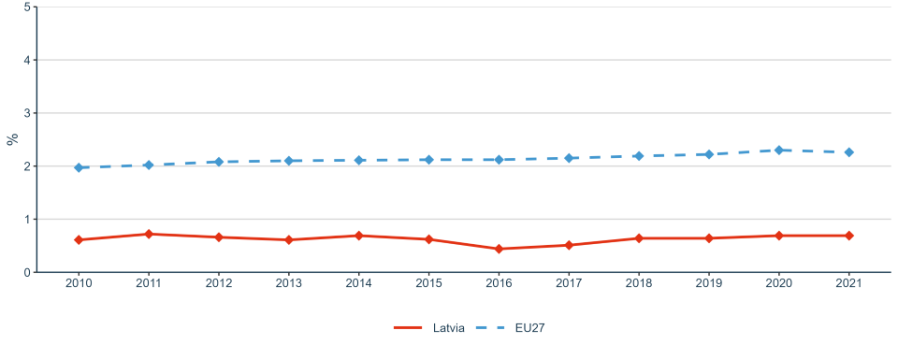

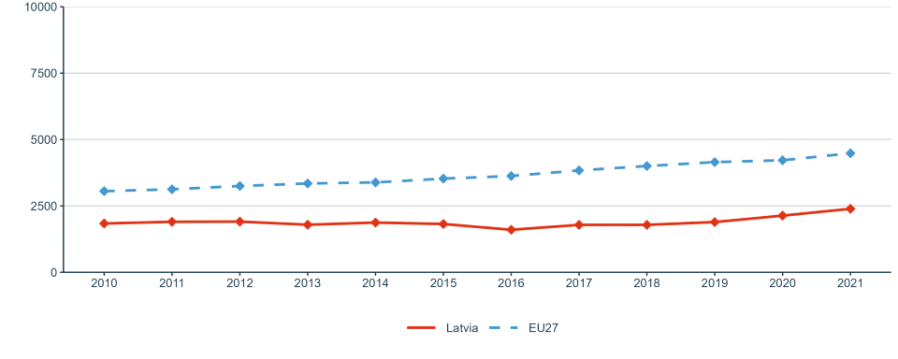
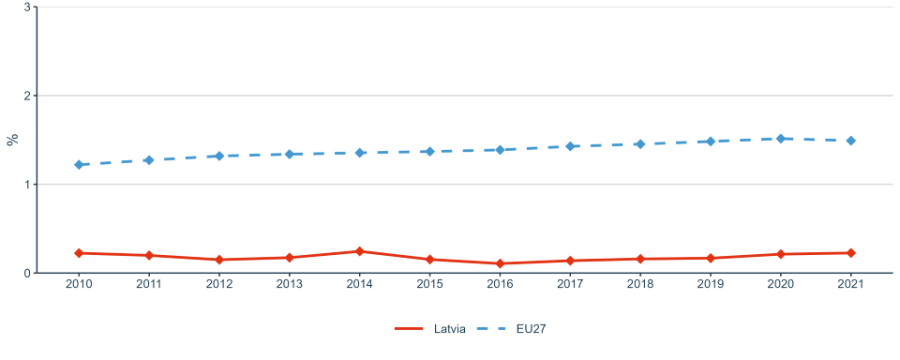
Priority 1: Deepening a truly functioning internal market for knowledge
Sub-priority 1.1: Open Science
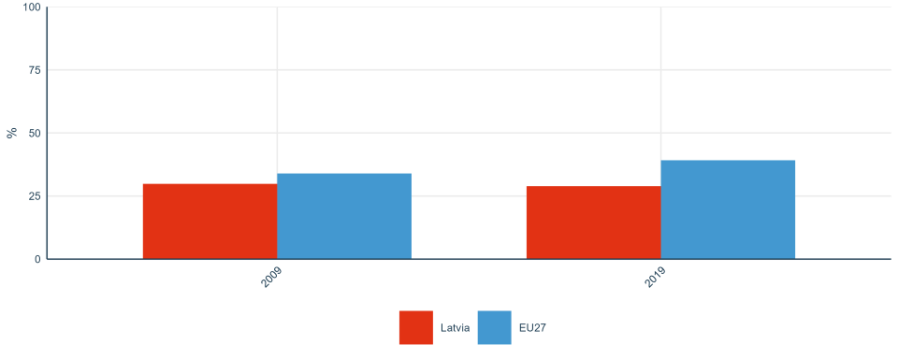
Sub-priority 1.2: Research infrastructures

Sub-priority 1.3: Gender equality, equal opportunities for all and inclusiveness
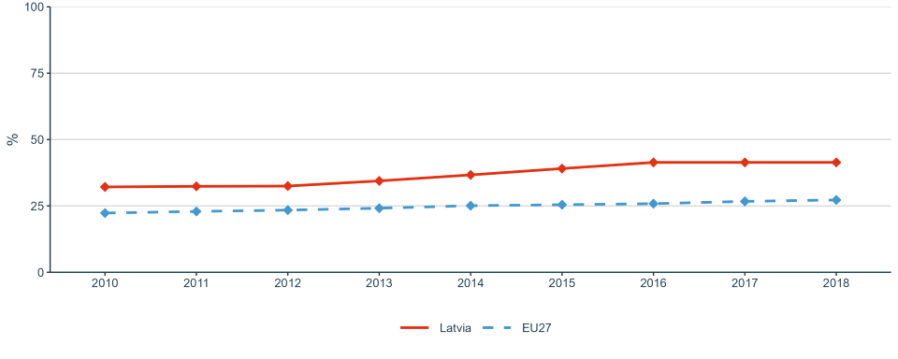
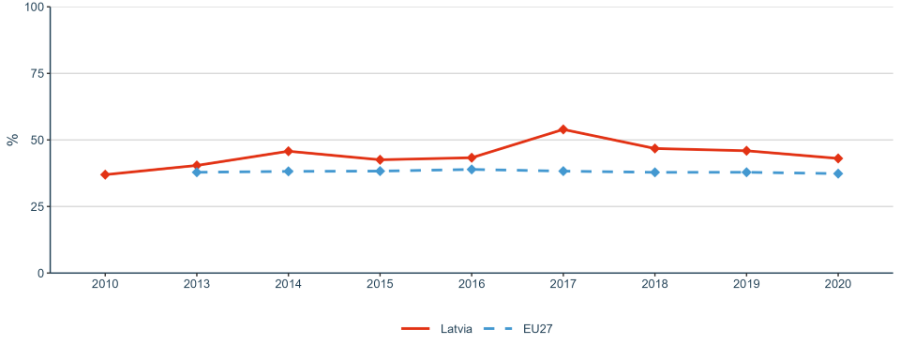
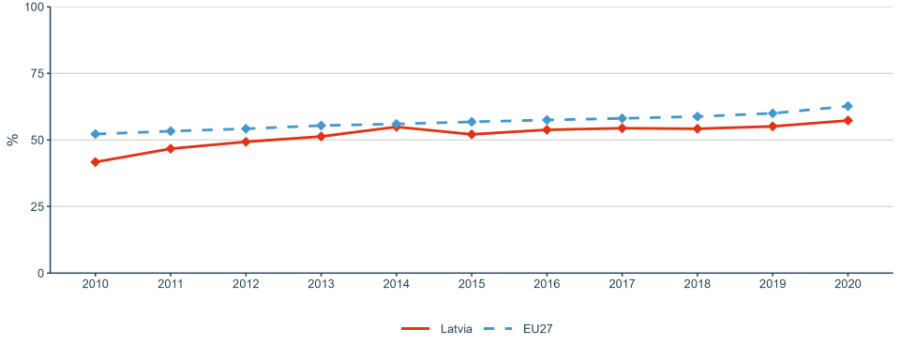
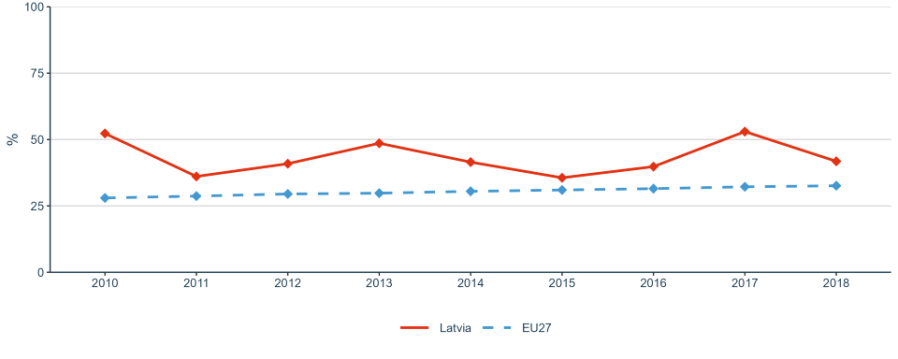

Sub-priority 1.4: Researchers’ careers and mobility and research assessment and reward systems
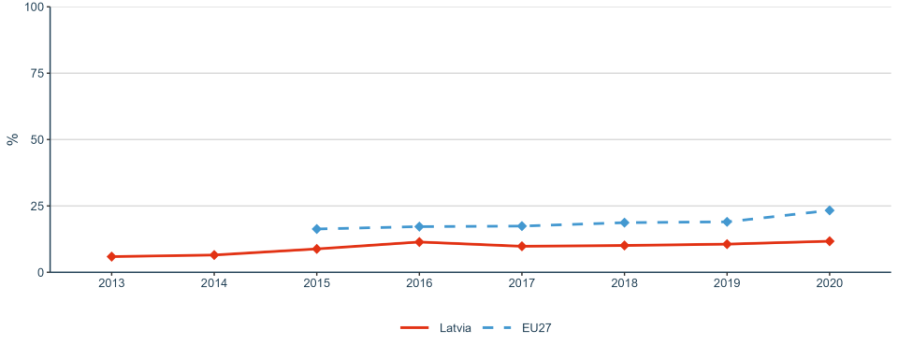


Sub-priority 1.5: Knowledge valorisation


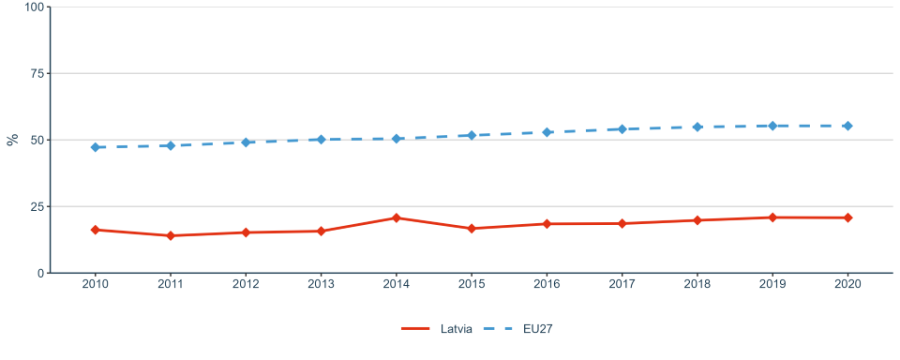

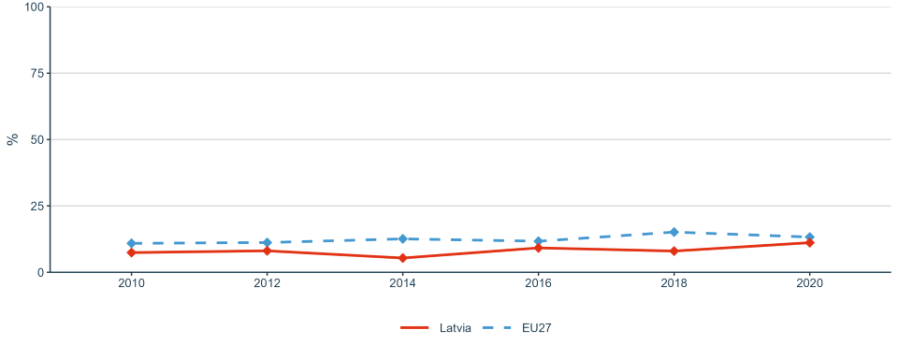
Sub-priority 1.6: Scientific leadership
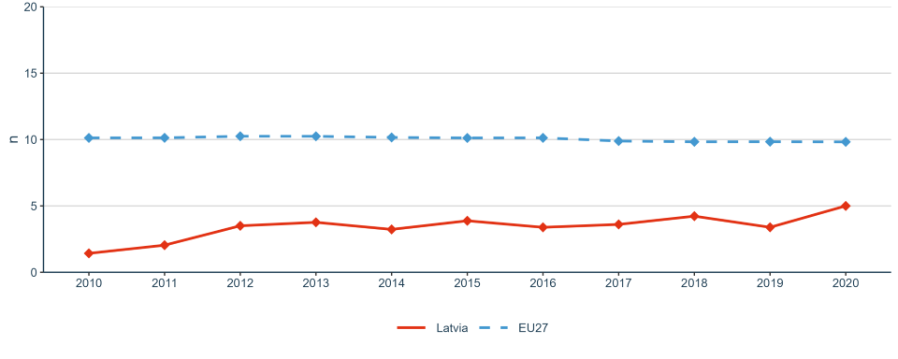
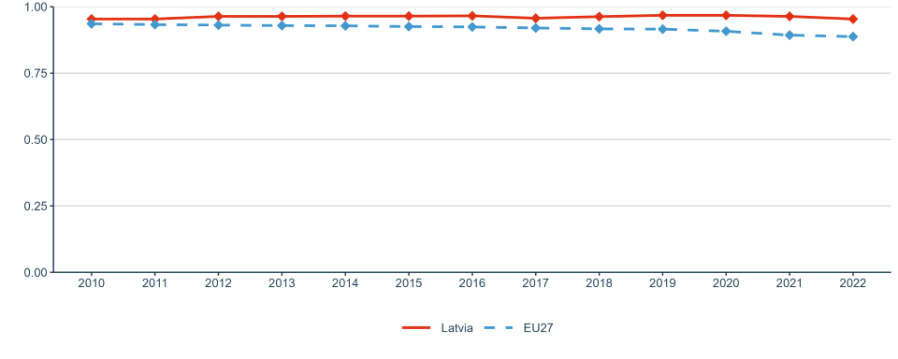
Sub-priority 1.7: Global engagement

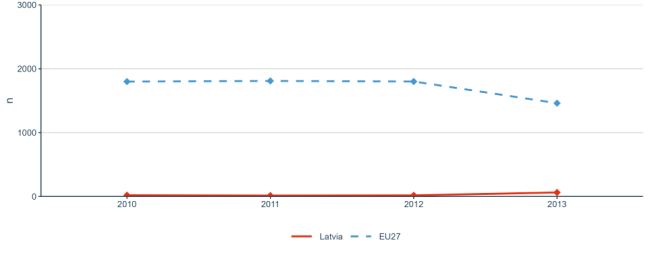
Priority 2: Taking up together the challenges posed by the twin green and digital transition, and increasing society’s participation in the ERA
Sub-priority 2.1: Challenge-based ERA actions

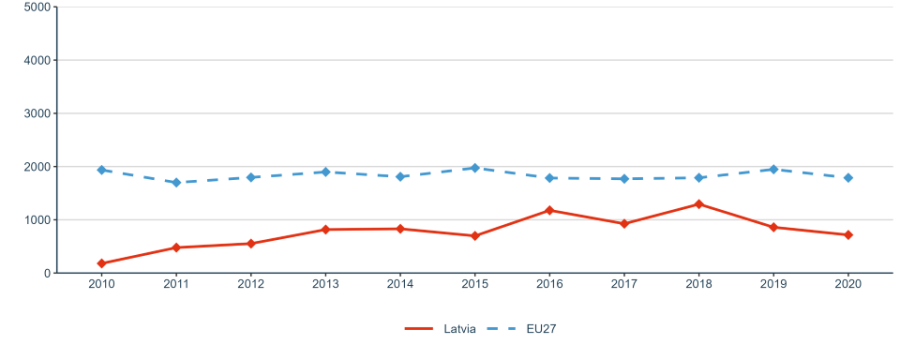
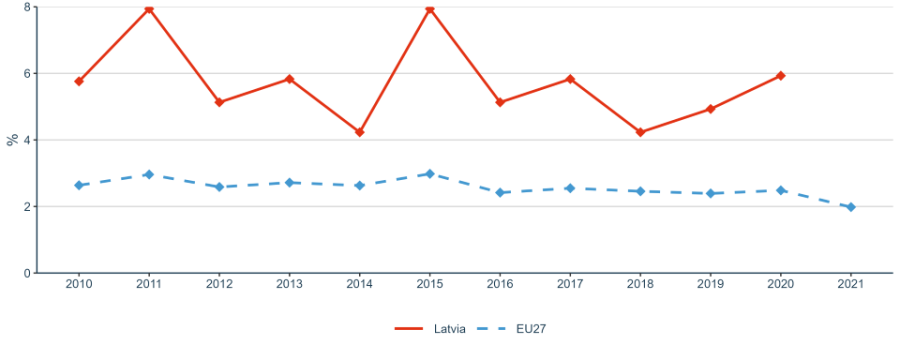
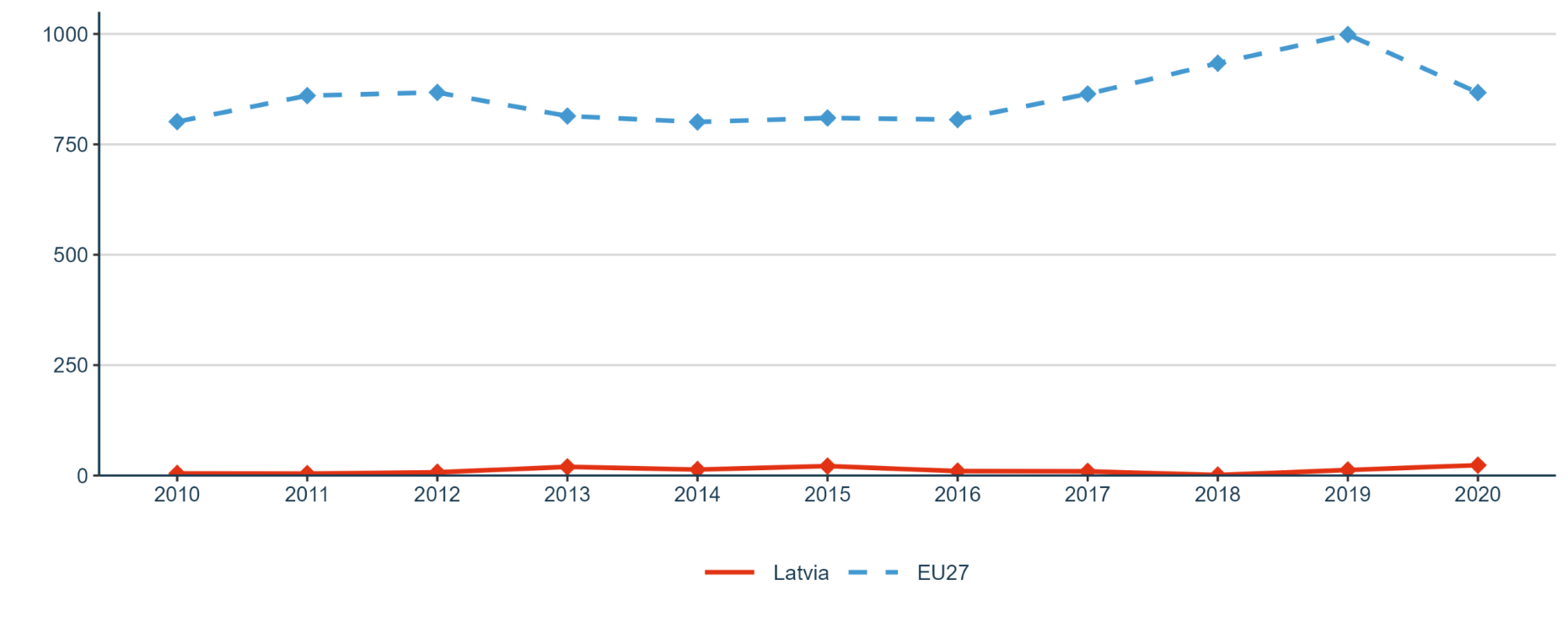
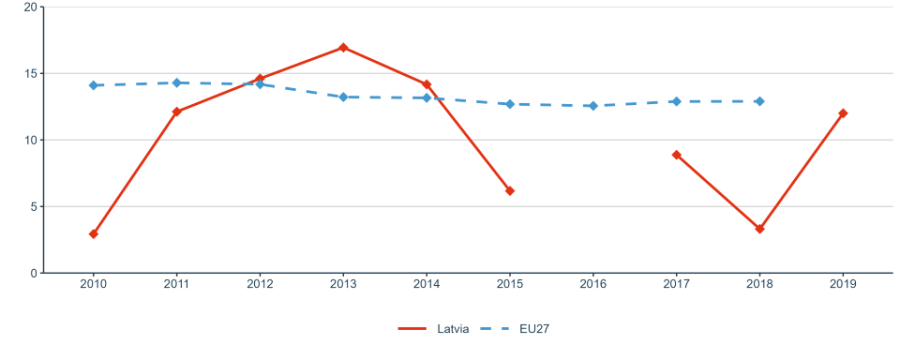
Sub-priority 2.2: Synergies with education and the European Skills Agenda
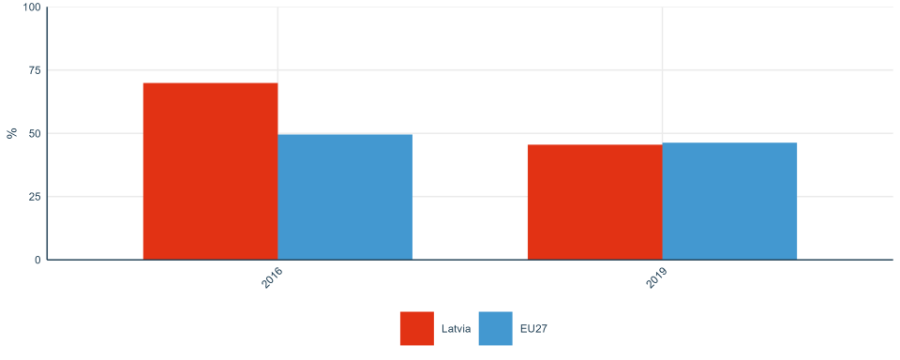
Sub-priority 2.3: Synergies with sectorial policies and industrial policy, in order to boost innovation ecosystems

Sub-priority 2.4: An active citizen and societal engagement in R&I in all its dimensions


Priority 3: Amplifying access to research and innovation excellence across the Union
Sub-priority 3.1: More investments and reforms in countries and regions with lower R&I performance
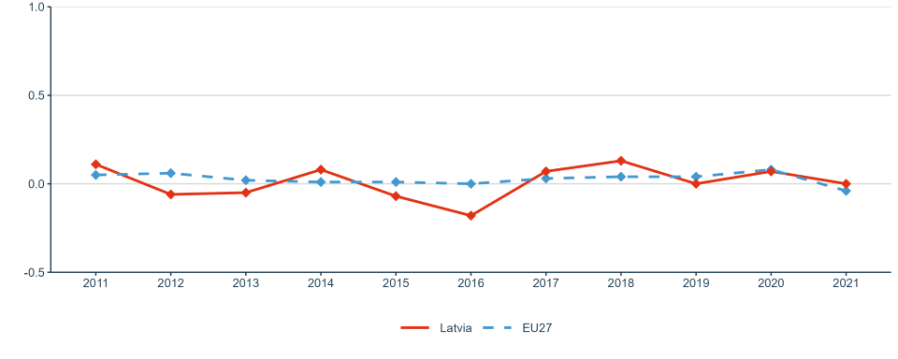
Priority 4: Advancing concerted research and innovation investments and reforms
Sub-priority 4.1: Coordination of R&I investments
